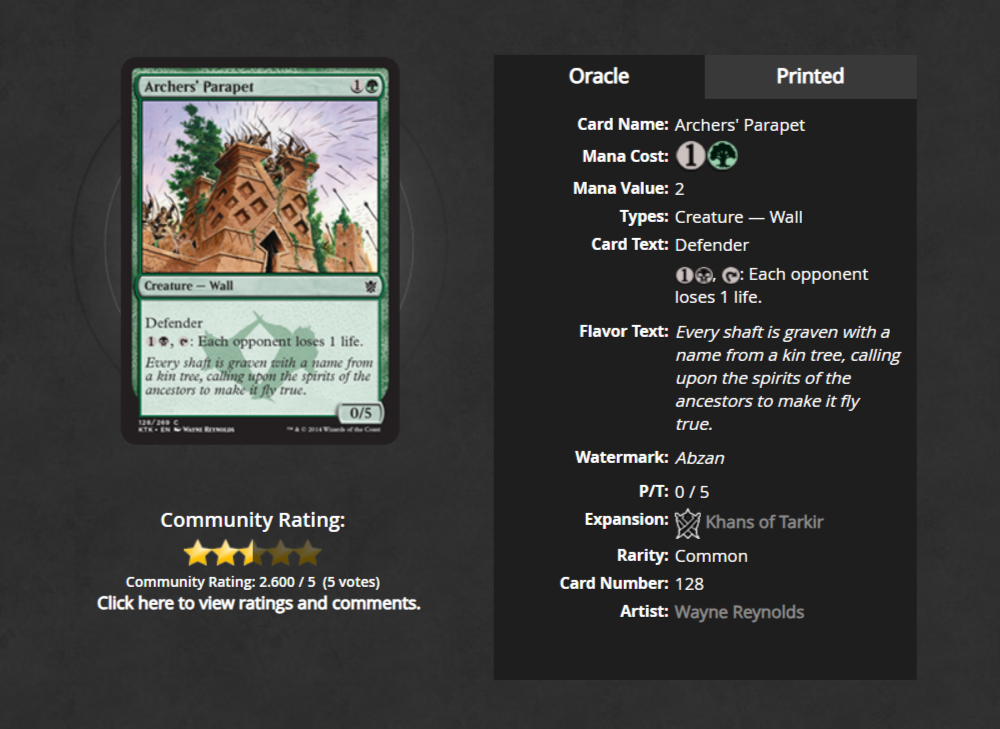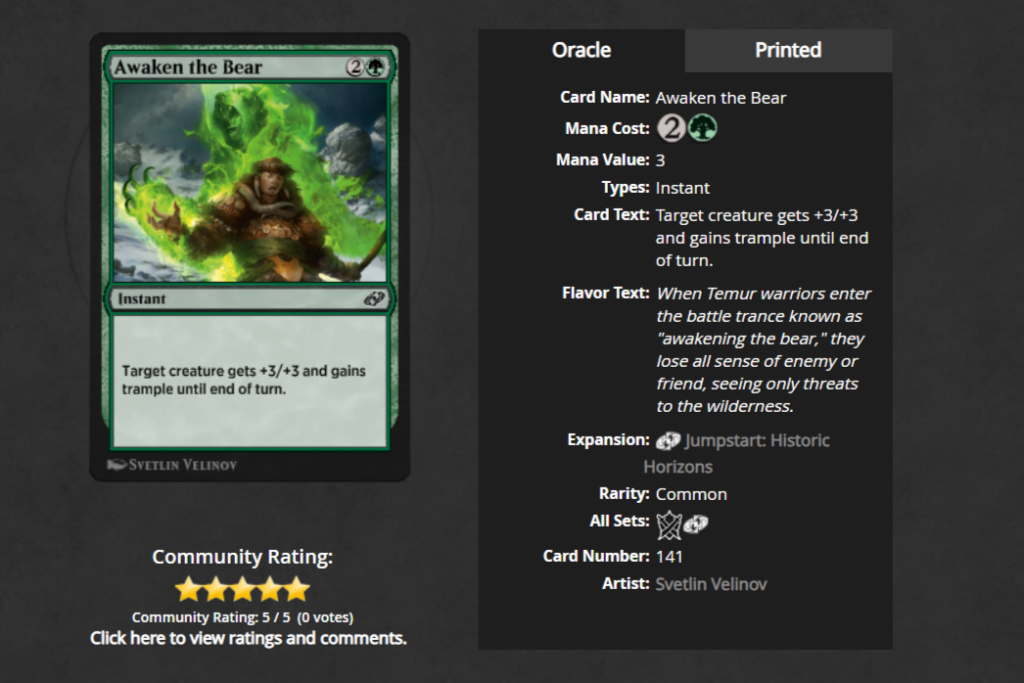Magic the Gathering menace is a keyword ability that significantly alters how combat plays out in games of Magic: The Gathering. Introduced officially in 2015 with the Magic Origins set, menace evolved as a replacement for the intimidate mechanic, which itself was a modern take on the even older fear mechanic. These mechanics all dealt with evasion, but menace provided a unique twist, allowing creatures to be blocked, but only under specific conditions.
In this article, we’ll explore the history of Magic the Gathering menace, why it became a core mechanic, how to use it effectively in decks, and dive deep into the cards that feature this powerful ability.
The History of Magic the Gathering Menace
The roots of Magic the Gathering menace can be traced back to the Fallen Empires set in 1994, where creatures exhibited early forms of the mechanic by being difficult to block. Menace, however, was formally introduced in Magic Origins in 2015 as a way to streamline the intimidating qualities of certain creatures without the confusing nuances of older mechanics like fear and intimidation.
- Fear allowed creatures to only be blocked by black or artifact creatures, which made gameplay limiting.
- Intimidate, introduced later, improved upon fear by restricting blocking to creatures that shared a color with the attacking creature or were artifacts.
While both mechanics were effective in certain decks, they often led to confusion and unintended restrictions. Enter menace: a simpler, more universally applicable evasion mechanic. Creatures with menace can only be blocked by two or more creatures, providing a clean, powerful way for aggressive decks to push through damage and force opponents to make tough decisions about their blocks.
Now considered an evergreen ability, Magic the Gathering menace can appear in any set and across all colors, although it’s most commonly seen in black and red cards. Menace plays a significant role in limited and constructed formats, making it a versatile and dangerous keyword in combat-heavy decks.
What Is Menace?
At its core, Magic the Gathering menace is an evasion ability. This means that creatures with menace are harder to block than standard creatures, but unlike flying or unblockable, they are not impossible to block—they just require more effort.
How it works:
- Menace prevents creatures from being blocked by a single creature. To block a creature with menace, two or more creatures must be assigned as blockers. If your opponent can only block with one creature, they cannot block the menace creature at all, forcing them to either sacrifice multiple blockers or let the damage through.
This makes menace a formidable ability, particularly in aggressive decks where overwhelming opponents with quick, difficult-to-block creatures is a common strategy. For instance, a menace creature can force your opponent to use up more resources than they’d prefer, weakening their board while your offensive strategy gains momentum.
Menace in Gameplay
Menace shines in red and black decks, where the ability is often paired with other aggressive mechanics such as haste, first strike, or trample, allowing you to pressure your opponent from multiple angles. In a typical game, an attacking creature with menace forces your opponent to either block inefficiently with two creatures (often losing at least one in the process) or take the damage, which can be devastating over time.
Example Scenario:
- You have a Rakdos Cackler with menace (a red and black 1/1 creature). Your opponent only has one 3/3 creature available to block. In this scenario, because your opponent can’t assign just one blocker to your menace creature, they either have to leave their 3/3 standing idle, taking damage, or sacrifice two creatures to block, possibly leading to a poor trade-off on their end.
How to Use Menace Effectively
Using Magic the Gathering menace successfully requires building your deck to maximize its impact, either by boosting your menace creatures’ power or by making it difficult for your opponent to mount effective defenses. Here are three key ways to use menace to your advantage:
1. Boosting Combat Damage
The effectiveness of menace increases when you can push through high amounts of damage. Cards that boost your creatures’ power, such as Giant Growth or Unholy Strength, are excellent ways to capitalize on menace. You can also make use of abilities like double strike, which allows your creature to deal its damage twice, increasing its chances of surviving combat while dealing more damage.
- Example:
- Embercleave, an equipment card, is a perfect match for menace creatures. It gives +1/+1, trample, and double strike—allowing your menace creature to deal damage during both the first strike and regular damage phases, while excess damage “tramples” over to your opponent’s life total. Combined with menace, this turns any creature into a serious threat.
2. Weakening Your Opponent’s Defenses
Since Magic the Gathering menace relies on your opponent having two blockers, you can use removal spells to weaken their defense. Cards like Bedevil (which destroys artifacts, creatures, or planeswalkers) or the classic Lightning Bolt can eliminate potential blockers, making it even harder for your opponent to deal with your menace creatures.
- Example:
- If you cast Kheru Mind-Eater (a 1/3 creature with menace that exiles cards from your opponent’s hand upon dealing combat damage), your goal should be to remove blockers with removal spells before attacking. Each time Kheru Mind-Eater hits the player, not only do you damage them, but you also weaken their ability to respond by exiling their cards.
3. Creature Survivability
One of the key challenges with aggressive decks is keeping your creatures alive long enough to deal maximum damage. Cards like Adamant Will (which grants +2/+2 and indestructible) or Soul of New Phyrexia (which can make all of your permanents indestructible for a turn) provide the protection needed to ensure your menace creatures survive combat and continue pressuring your opponent.
- Example:
- Suppose your opponent has set up a massive defense with two strong blockers. You can cast Adamant Will on your menace creature, ensuring that even if your opponent sacrifices two blockers, your menace creature stays alive and remains a threat in the following turns.
Top Cards with Menace
Now that we’ve covered how to use Magic the Gathering menace, let’s explore some of the most powerful and versatile cards that feature this mechanic. Each of these cards offers unique synergies and strategies, making them valuable assets in both casual and competitive decks. Whether you’re playing for fun or looking to build a highly optimized deck, these menace cards can turn the tide of a game by making your creatures more difficult to block and adding strategic depth to combat.
1. Kheru Mind-Eater
- Effect: Whenever Kheru Mind-Eater, a 1/3 black creature, deals combat damage to a player, that player exiles a card from their hand. You may play that card for as long as it remains exiled.
- Why It’s Good: Kheru Mind-Eater is a brilliant card for disrupting your opponent’s strategy. By forcing them to exile a card every time it deals damage, you not only reduce their hand size but also gain access to their resources. In multiplayer formats like Commander, this menace creature can provide consistent card advantage while whittling away at your opponent’s key spells. It’s particularly effective against opponents who hold back cards for late-game power plays. Kheru Mind-Eater can exile those cards early, keeping your opponent off balance. Moreover, its ability to let you cast the exiled cards allows you to benefit from the disruption, creating even more tactical advantages. In a Rakdos or Orzhov deck, pairing Kheru Mind-Eater with hand disruption spells like Thoughtseize can completely dismantle your opponent’s hand while feeding your board with additional spells.
2. Rankle, Master of Pranks
- Effect: Rankle is a 3/3 flying, haste menace creature that allows you to choose one or more of three options when it deals combat damage to a player: each player discards a card, sacrifices a creature, or draws a card.
- Why It’s Good: Rankle, Master of Pranks is an incredibly versatile card that brings chaos to the battlefield. Its combination of flying, haste, and menace makes it hard to block, especially early in the game. Once it deals damage, its range of abilities allows you to manipulate the game state to your advantage. For example, forcing everyone to discard cards can hurt control decks reliant on large hands, while forcing a creature sacrifice is useful for disrupting your opponent’s board presence. Rankle is particularly devastating when combined with sacrifice synergies in black decks. You can pair it with cards like Blood Artist or Grim Haruspex, punishing your opponent even more when creatures leave the battlefield. In a Rakdos aggro deck, Rankle speeds up the game, constantly pushing your opponent into tough choices while providing consistent combat pressure. The ability to control card draws also helps you maintain your deck’s tempo, keeping your hand fresh while forcing your opponents into tricky resource management situations.
3. Murderous Rider
- Effect: Murderous Rider is a 2/3 menace creature with lifelink that can also be cast as an adventure spell called Swift End. Swift End allows you to destroy a target creature or planeswalker for just three mana, and after using this removal, Murderous Rider is placed into your hand, ready to be cast as a creature.
- Why It’s Good: Murderous Rider excels in versatility. The ability to destroy a creature or planeswalker for just three mana is incredibly efficient, especially in midrange and control decks where removing threats at key moments can shift the game in your favor. After using Swift End to remove a blocker or threat, you can cast Murderous Rider as a menace creature with lifelink. The lifelink ability helps offset the two life lost from using the adventure spell and gives you the opportunity to regain health through combat. This dual-purpose card is highly efficient in Rakdos and Orzhov strategies, where you need to control the board while maintaining an aggressive edge. Murderous Rider pairs well with other adventure creatures like Bonecrusher Giant, providing both removal and a resilient body on the battlefield.
4. Dreamstealer
- Effect: Dreamstealer is a 1/2 menace creature that forces your opponent to discard cards equal to its power whenever it deals combat damage to a player. It also has eternalize, allowing it to return from the graveyard as a 4/4 black zombie token.
- Why It’s Good: Dreamstealer excels in hand disruption and recursion. Its discard ability is powerful in any deck looking to cripple an opponent’s strategy by limiting their card resources. When you use Dreamstealer in conjunction with pump spells or auras to increase its power, your opponent can be forced to discard several cards at once. Additionally, the eternalize ability makes Dreamstealer a great late-game threat. Even if your opponent manages to kill it early, you can bring it back as a 4/4 menace creature, continuing to devastate their hand with every attack. In graveyard-centric decks like Golgari, Dreamstealer fits perfectly with cards that reanimate creatures from the graveyard or add counters to increase its power. Combining it with Golgari Findbroker or Liliana, Dreadhorde General allows you to repeatedly recur this card, keeping your opponent perpetually on the defensive.
5. Labyrinth Raptor
- Effect: Labyrinth Raptor is a 2/2 black-red menace creature that triggers whenever a menace creature you control becomes blocked. It forces the defending player to sacrifice one of their blockers. Additionally, you can pay mana to pump all menace creatures you control, giving them +1/+0 until the end of turn.
- Why It’s Good: Labyrinth Raptor maximizes the effectiveness of menace by making blocking even more punishing for your opponent. If your opponent tries to block a menace creature with two or more creatures, they will have to sacrifice one blocker before combat damage is even dealt. This often results in your opponent losing multiple creatures or choosing not to block at all, giving you free reign to deal damage. The pump ability further strengthens your attack by allowing you to push through additional damage in the later turns. Labyrinth Raptor is especially powerful in decks focused on aggro or Rakdos strategies, where the goal is to apply pressure quickly and overwhelm your opponent. In combination with cards like Rotting Regisaur or Dire Fleet Warmonger, the Raptor can turn an aggressive start into an unstoppable assault. In a menace-focused deck, its synergy with cards that grant additional menace, like Sonorous Howlbonder, can make it nearly impossible for your opponent to block your creatures effectively.
Conclusion
These five cards—Kheru Mind-Eater, Rankle, Master of Pranks, Murderous Rider, Dreamstealer, and Labyrinth Raptor—are some of the most effective Magic the Gathering menace cards, each offering a unique strategic benefit that can overwhelm your opponent. Whether you’re disrupting their hand, controlling the board, or maximizing combat damage, these cards can help you dominate the battlefield in both casual and competitive formats. By incorporating them into your deck, you’ll gain access to key tools that exploit menace’s full potential, ensuring your creatures are difficult to block while delivering devastating effects in every game.




